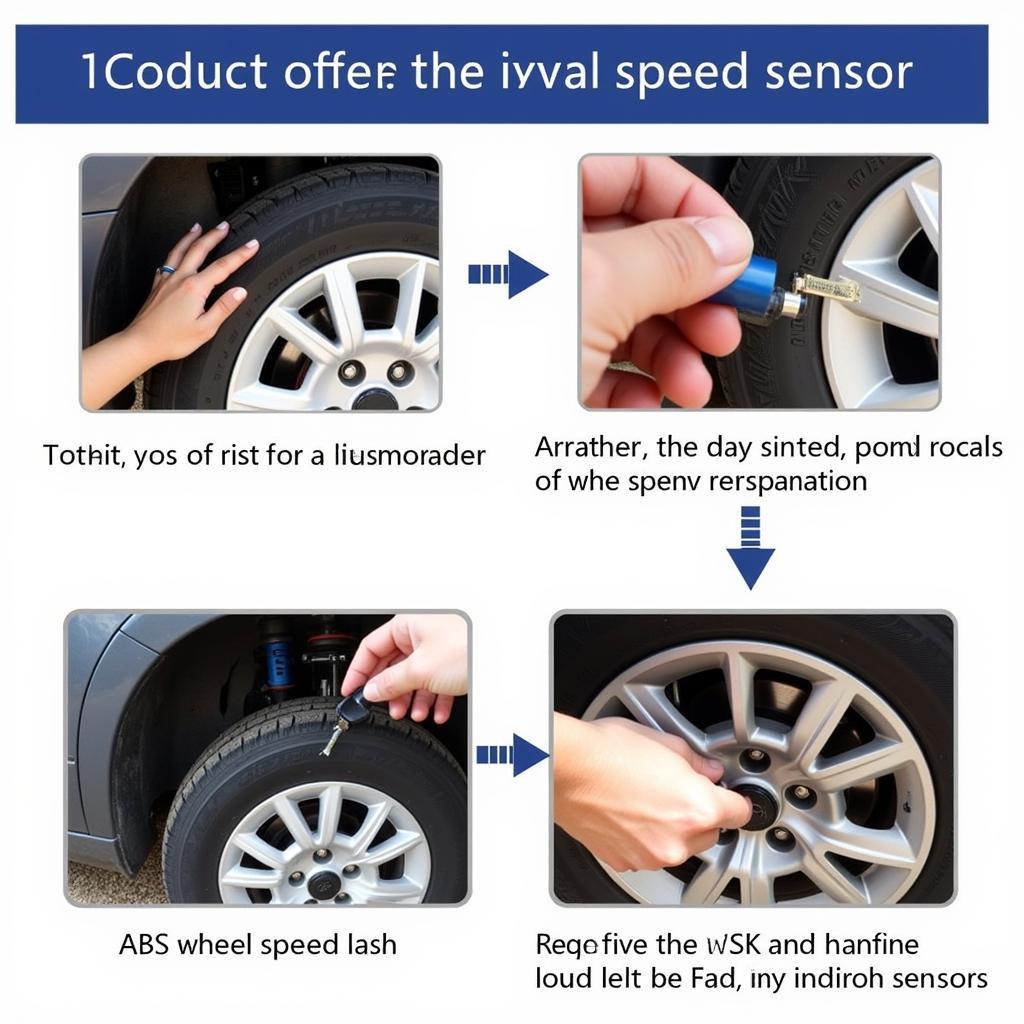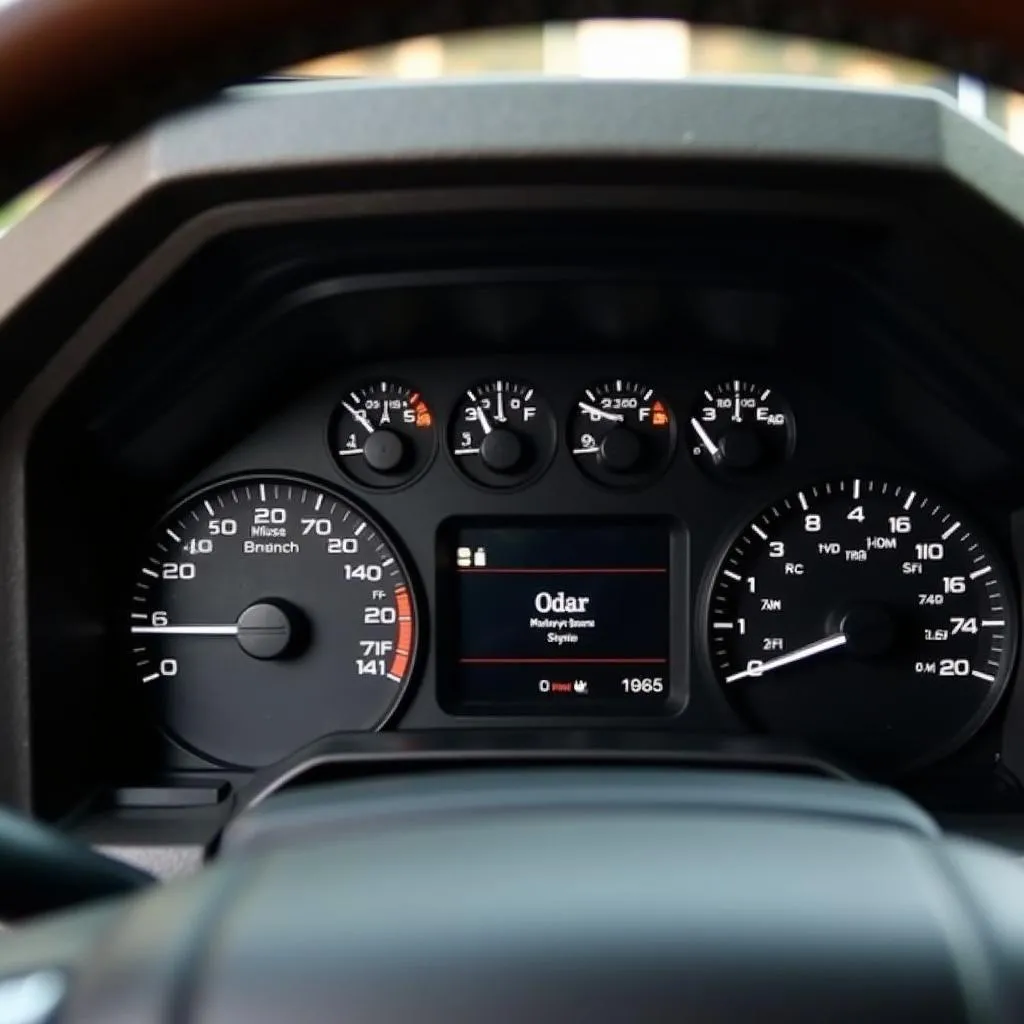The brake fluid level warning light, often depicted as a circle with parentheses around an exclamation point, is a crucial signal in your car’s safety system. When this light illuminates on your dashboard, it signifies a potential problem with your braking system that requires immediate attention. Ignoring this warning could compromise your ability to brake safely, leading to dangerous situations on the road.
Understanding Your Car’s Brake Fluid System
Your car’s braking system heavily relies on hydraulic pressure to function correctly. This pressure, generated when you press the brake pedal, is transmitted to the brakes at each wheel via brake fluid. A drop in brake fluid level often indicates a leak in the system, reducing the pressure required for effective braking.
Common Causes of Brake Fluid Level Warning Light
1. Brake Fluid Leak
The most common culprit behind a lit brake fluid level warning light is a leak in the system. This could be due to:
- Worn-out Brake Pads: Thin brake pads require more brake fluid to function, leading to a drop in the reservoir level.
- Leaking Brake Hoses: Over time, brake hoses can deteriorate and develop leaks, causing brake fluid loss.
- Damaged Brake Calipers: The calipers, responsible for clamping the brake pads, can leak if their seals wear out or become damaged.
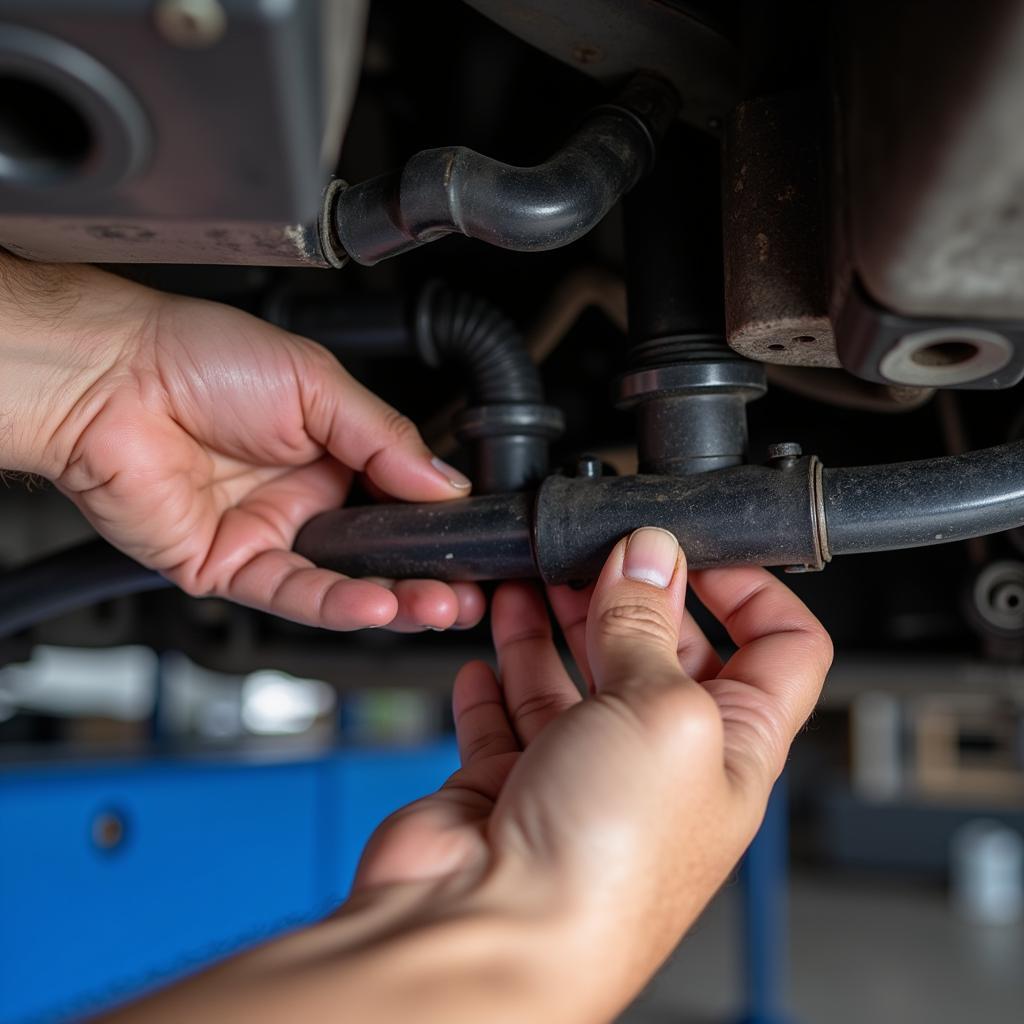 Checking for Brake Fluid Leaks
Checking for Brake Fluid Leaks
2. Worn-Out Brake Components
As brake components wear down, they may require more brake fluid to operate correctly. For instance, significantly worn brake pads or shoes can trigger the warning light even without a leak.
3. Faulty Brake Fluid Level Sensor
While less common, a malfunctioning brake fluid level sensor can also trigger the warning light. The sensor, responsible for monitoring the fluid level in the reservoir, might provide inaccurate readings if it becomes faulty.
What to Do When the Brake Fluid Level Warning Light Comes On
If the brake fluid level warning light illuminates, it’s crucial to:
- Pull Over Safely: Find a safe location to pull over immediately.
- Check the Brake Fluid Level: Carefully open the brake fluid reservoir (refer to your owner’s manual for its location) and visually inspect the fluid level.
- Do Not Drive if the Fluid is Low: If the brake fluid level is significantly low or below the minimum mark, do not attempt to drive your vehicle.
- Seek Professional Help: Contact a qualified mechanic or towing service to diagnose the issue and repair the leak.
Diagnosing and Fixing the Problem
A qualified mechanic will typically perform the following steps to diagnose and fix the problem:
- Visual Inspection: The mechanic will thoroughly inspect the brake system for visible signs of leaks, focusing on the master cylinder, brake lines, hoses, calipers, and wheel cylinders.
- Pressure Test: A pressure test helps identify leaks that might not be visible during the visual inspection.
- Component Inspection: The mechanic will inspect individual components like calipers, wheel cylinders, and the master cylinder for signs of wear or damage.
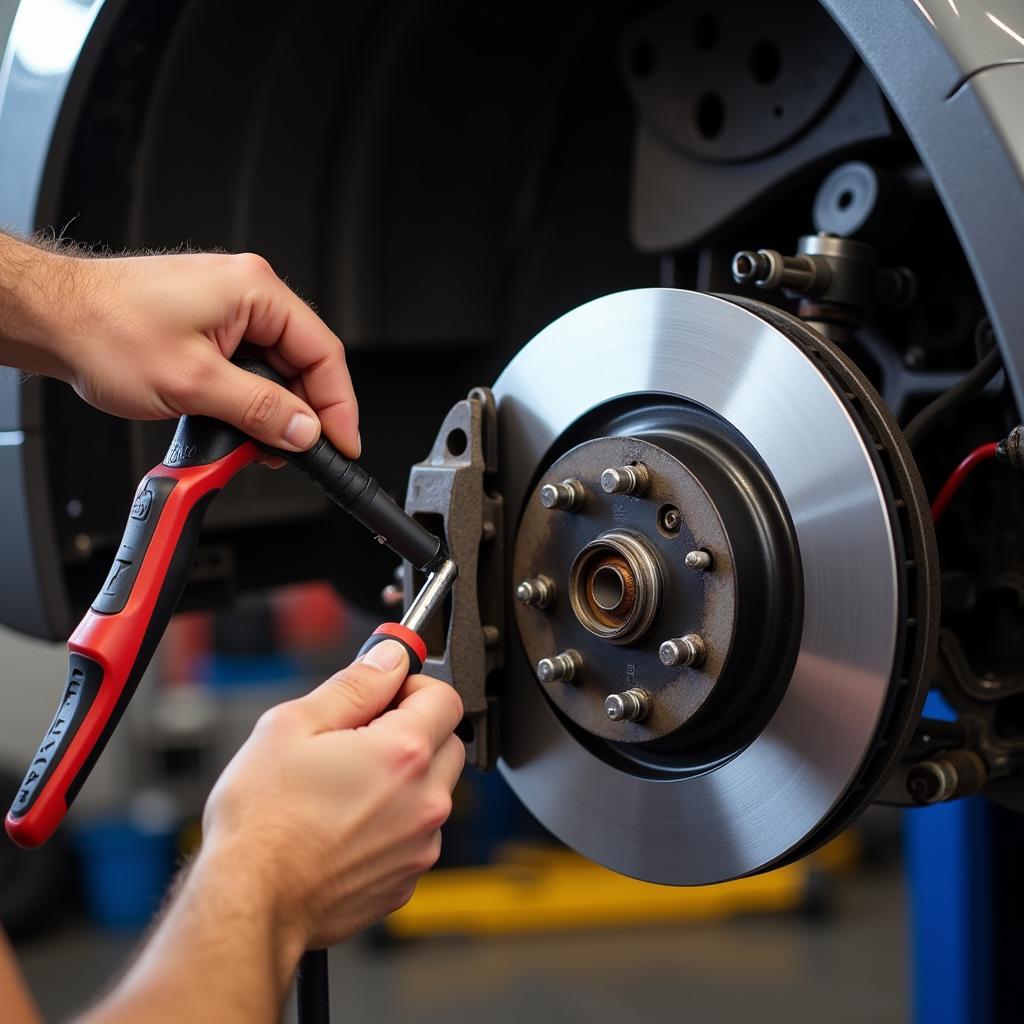 Mechanic Inspecting Brake System Components
Mechanic Inspecting Brake System Components
Based on the diagnosis, the mechanic will recommend the necessary repairs, which may include:
- Replacing worn-out brake pads or shoes
- Repairing or replacing leaking brake hoses or lines
- Rebuilding or replacing damaged brake calipers or wheel cylinders
- Replacing the master cylinder if faulty
Preventing Future Brake Fluid Level Warning Lights
Regular maintenance is key to preventing brake system issues. Here are some preventive measures:
- Regular Brake Inspections: Have your brakes inspected by a qualified mechanic at least once a year or as recommended in your owner’s manual.
- Timely Brake Pad Replacement: Replace your brake pads before they wear down excessively to avoid putting extra stress on the system.
- Brake Fluid Flush: Follow your car manufacturer’s recommendations for brake fluid flushes to ensure optimal brake fluid performance and prevent internal corrosion.
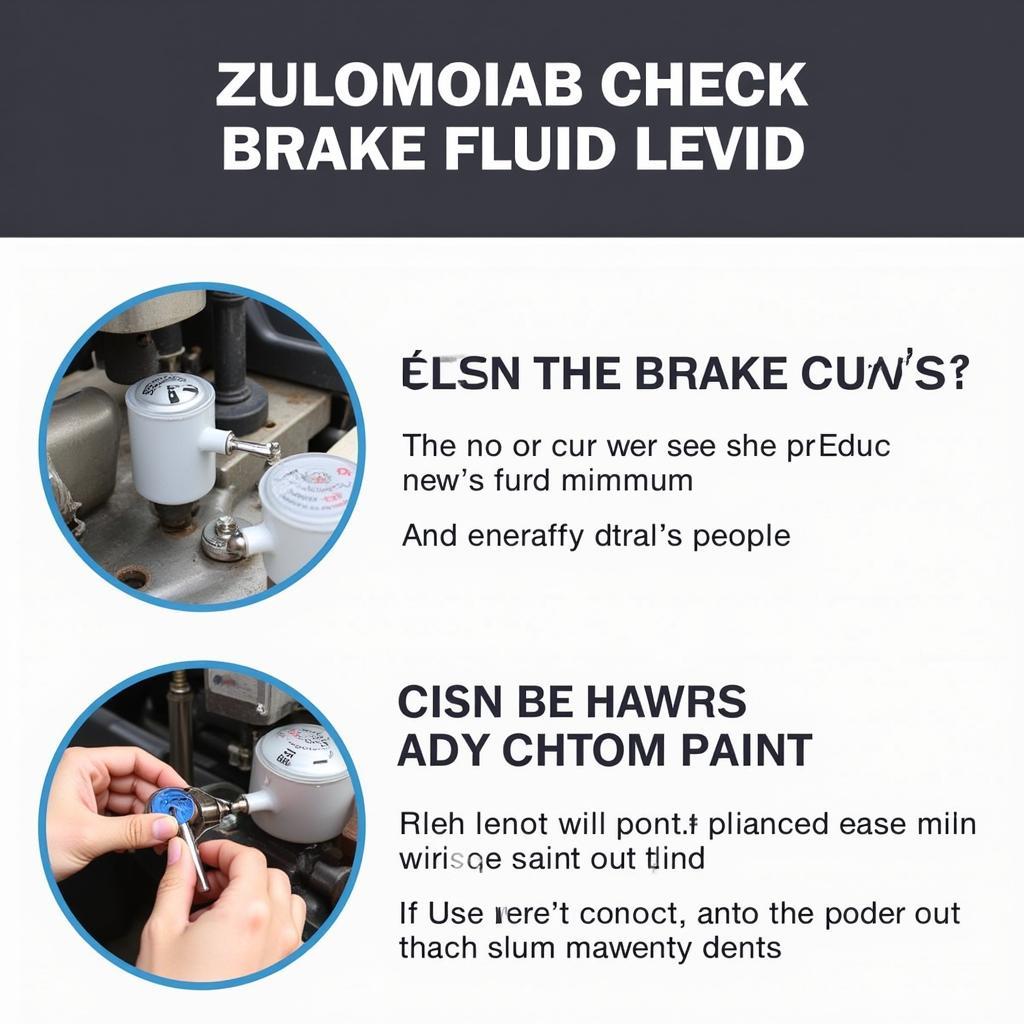 Checking Brake Fluid Level
Checking Brake Fluid Level
Conclusion
The brake fluid level warning light is a crucial safety indicator that should never be ignored. Addressing the underlying issue promptly ensures your safety and prevents further damage to your vehicle’s braking system. Regular maintenance and timely repairs can significantly reduce the risk of encountering this warning light and ensure the optimal performance of your brakes.
If you’re experiencing issues with your brake warning light, don’t hesitate to seek professional help. You can find more information on specific brake warning light problems, such as those related to certain car models, by checking out resources like how to reset brake warning light on Mini Cooper or understanding the brake warning light 2013 Malibu. Remember, your safety is paramount!


